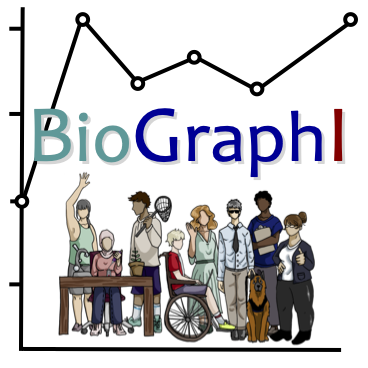Biodiversity Counts! Making sense of diversity metrics and graphs
Author(s): Ana Elisa Garcia Vedrenne1, Maria Rebolleda Gomez1
University of California, Irvine
1280 total view(s), 938 download(s)
Summary:
In this lesson students 1) become familiar with various graphs that are used to study diversity patterns within and across sites, 2) learn about some of the questions that can be addressed by metabarcoding studies, and 3) reflect on an interview…
Contents:
1_Lesson Guide_Biodiversity counts.pdf(PDF | 516 KB)
3_Abbreviated Lesson Guide_Biodiversity counts(PDF | 67 KB)
- 1_Lesson Guide_Biodiversity counts - Google Docs
- 2_Presentation slides_Biodiversity counts - Google Slides
- 3_Abbreviated Lesson Guide_Biodiversity counts - Google Docs
- 4_Basics video_Biodiversity counts.mp4 - Google Drive
- 5_Basics Quiz_Biodiversity counts.docx - Google Docs
- 6_Worksheet_VennDiagram_Biodiversity counts.docx - Google Docs
- 7_Worksheet_AlphaDiversity_Biodiversity counts.docx - Google Docs
- 8_Worksheet_BetaDiversity_Biodiversity counts.docx - Google Docs
- 9_Worksheet_PercentStackedBarplot_Biodiversity counts.docx - Google Docs
- License terms
Description
Level: Introductory
Course type: Lecture / Dry lab
Delivery mode: In person, synchronous
Students: First year, mostly majors
Number of students: 20 - 80 students
Estimated duration of activity: 90 min
Materials included: lesson guide, presentation slides for in-class activity, 1 page instructor guide, pre-class basics video and quiz, in-class worksheets.
Quantitative learning objective(s)
- Analyze data and/or create graphs/figures related to the concepts from this lesson.
- Reflect on your perceptions about using graphs or figures in biology
Diversity/equity/inclusion learning objective(s):
- Reflect on your perceptions of people who do biology.
- Compare your own interests and/or identities to those of people who do biology.
Content learning objective(s):
- Interpret diversity metrics (e.g. alpha and beta diversity).
- Use metabarcoding data to compare communities.
- Identify the research question being addressed in an experiment.
Cite this work
Researchers should cite this work as follows:
- Garcia Vedrenne, A. E., Rebolleda Gomez, M. (2023). Biodiversity Counts! Making sense of diversity metrics and graphs. BioGraphI FMN Fall 2022, QUBES Educational Resources. doi:10.25334/XERY-1143
